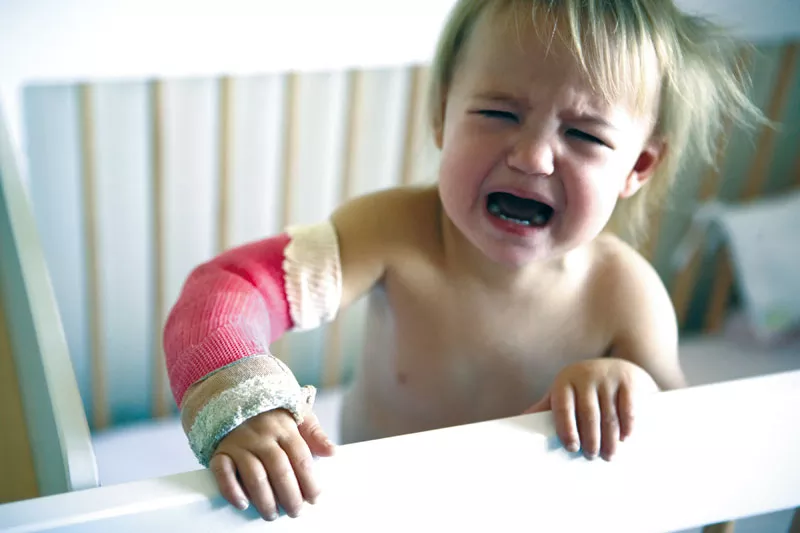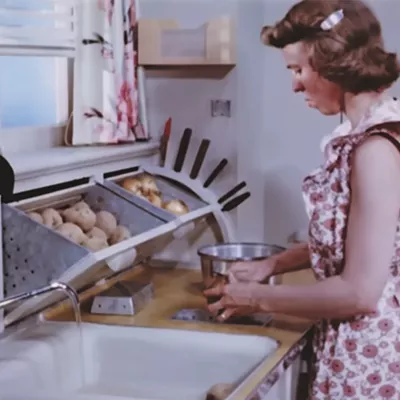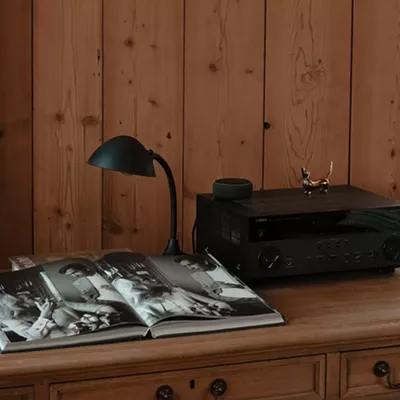A is for Accident. The details of our first bone break are etched in our memories. Aubrey Springer’s now five-year- old tale is a dramatic one, involving titanium rods and two major surgeries; all born of a botched beanbag landing.
Aubrey’s mom, Misty, was used to hearing her three young children play loudly and acrobatically in the basement.
“I was upstairs making dinner, and my husband was supervising. The kids were just jumping off a window ledge onto this big beanbag. But Aubrey missed, and landed on her leg,” Misty recalls. “She started screaming, and my eight-year-old said he heard ‘a loud crack.’ She was in horrible pain and in shock.”
Once the ambulance had taken the family to the pediatric ER, doctors determined Aubrey had broken her femur (thigh bone), and she was set up for surgery the following morning.
While placing titanium rods is unusual for a child as young and petite as was her then five-year-old, the surgery was a better alternative, explains Springer, with quicker healing than the other option: six weeks of traction.
“I remember specifically thinking, ‘Are her bones weaker because she has had dietary issues?’ She doesn’t eat dairy… I looked at the distance she had fallen, and it didn’t seem that far, and I thought that was a lot of trauma,” Springer says.
But the doctors who evaluate broken bones for a living say very few breaks in children raise suspicion, as long as they are the result of a collision.
“If the child says, ’I was playing football,’ or any other high-energy activity that ended with a trauma, I’m not concerned about bone health,” explains orthopedic surgeon Matt Wallace. “But if a child is having multiple bone fractures without trauma, then they should be seen. If abnormalities are discovered, we would refer them to an endocrinologist,” says Wallace.
B is for Bones. Don’t feel bad if skeletal health and development haven’t been major concerns in raising your children.
“I would say that most parents don’t think about bone health until that first break,” says Wallace. “Most of the time, broken bones look normal and heal reliably. The younger the patient is, the more angulation and displacement we can tolerate,” he explains. “When you’re talking about a 15-year-old girl, or a 16-year-old boy, their bones aren’t going to change; we have to treat them like adults. We’d have to straighten it.”
Kids develop 90 percent of their bone mass before age 12, a time period when parents are usually more concerned with tracking height and weight than with framework. But the National Institutes of Health has launched an information campaign, Kids and Their Bones: A Guide for Parents, after a resurgence of the until recently never-seen disease rickets — a softening of bones caused by a deficiency of vitamin D, which keeps a body from absorbing calcium.
C and D are for Calcium and D-deficient. “Luckily, nutritional rickets is a rare problem,” according to Wallace. Of more concern, according to the National Institutes of Health, is osteoporosis — which they call “a pediatric disease with geriatric consequences.” A 2009 study published in the online version of the journal Pediatrics looked at data from 6,000 children from all over the United States and found nearly 70 percent of children had low levels of vitamin D, putting them at increased risk for heart and bone disease.
Wallace says his most immediate concerns are obesity and a sedentary lifestyle. And there’s one easy cure for all of it.
E is for Exercise. “Get them off their butts, and outside,” says Wallace. Seriously. Doctor’s orders. “Children aren’t as active as they need to be; when you develop bad habits early on, years later they turn into major health issues,” like arthritis and osteoporosis.
While any type of exercise is great for overall health, weight-bearing exercises are the bone builders. Running, walking, skiing and soccer qualify as “weight-bearing” because your feet and legs work your muscles and bones against gravity. As this happens, bone adapts to the impact of weight and the pull of muscle by becoming stronger and more dense.
Wallace admits his own experience — as a father of five — shows it can be tough to get kids to get moving. “There’s better media; iPads, iPods and TV, so they’re aren’t as active,” he says.
“If I say, ‘Go outside and play,’ they just stare at me, but if I say, ‘Let’s go out and throw the ball,’ or even a Frisbee, they’ll go,” Wallace says. “We have to want to be active with them.”
Getting Kids Enough Vitamin D
We can’t count on the sun like we used to for vitamin D — there are too many regional differences based on longitude and latitude, as well as significant differences in absorption based on ethnicity and skin tone. Incidentally, I have heard the incidence of rickets has been up in Southern California, despite its relationship to the sun — presumably because parents are doing a great job with sun block. And our skin does need to be protected: these days, our skin needs to last us 100 years, compared to maybe 50 years just a century ago. At the same time, it is evermore apparent that vitamin D does more than just contribute to bone health; it also is crucial in neurologic and cardiac health, possibly in immune function, and it definitely can very much be associated with mood — maybe seasonal affective disorder.
So what to do?
Breast-fed babies will need a liquid supplement to achieve 400 international units a day — moms are doing great with breast feeding, but vitamin D is a big molecule, so it does not get through the breast milk in adequate amounts. And we are not keen on babies getting direct sun. The 400 IUs would also be contained in 25-30 ounces of formula. Older kids and adults should get 600 to 800 IU a day.
Obviously in kids and adults, the best way for them to get enough vitamin D is from dietary sources, but that is pretty hard to do, so you may need to look into supplements. Be aware that it takes quite a bit more vitamin D to tune up someone with a deficiency, so testing is recommended if a low level is suspected; the RDA is just going to maintain a level, not raise it.
— Dr. Matt Thompson
Running Is Like Freedom
Carol Hunter can’t help but promote her favorite weight-bearing exercise. She believes in running so much, she volunteers and fundraises for Spokane’s Active for Youth, and chairs the Lilac Bloomsday Run.
When Spokane Public Schools cancelled its cross-country program a few years ago, Hunter says she knew she had to help bring running back as an option for children. So she worked with her friend, Active For Youth founder Mike Bresson, to bring back running to neighborhood schools. Each fall, schools run miles and half-miles after school, compete in a few bi-weekly regional, then all-city meets.
“It should be a requirement for schools to let children outside,” she says. “It should be a requirement that we never lose physical education programs, or cross-country. Running is inexpensive, you don’t require a ball or coordination, and for kids, it’s a natural thing. It encourages a sense of excitement, and for some kids their first experience with competition. Plus, we’re giving them an opportunity to build metabolism and promote skeletal health.”
— Lisa Fairbanks-Rossi














